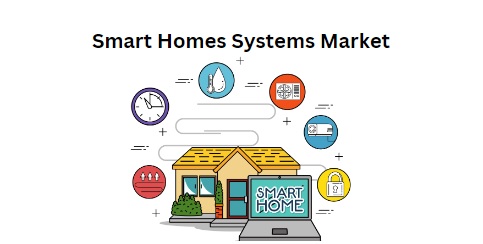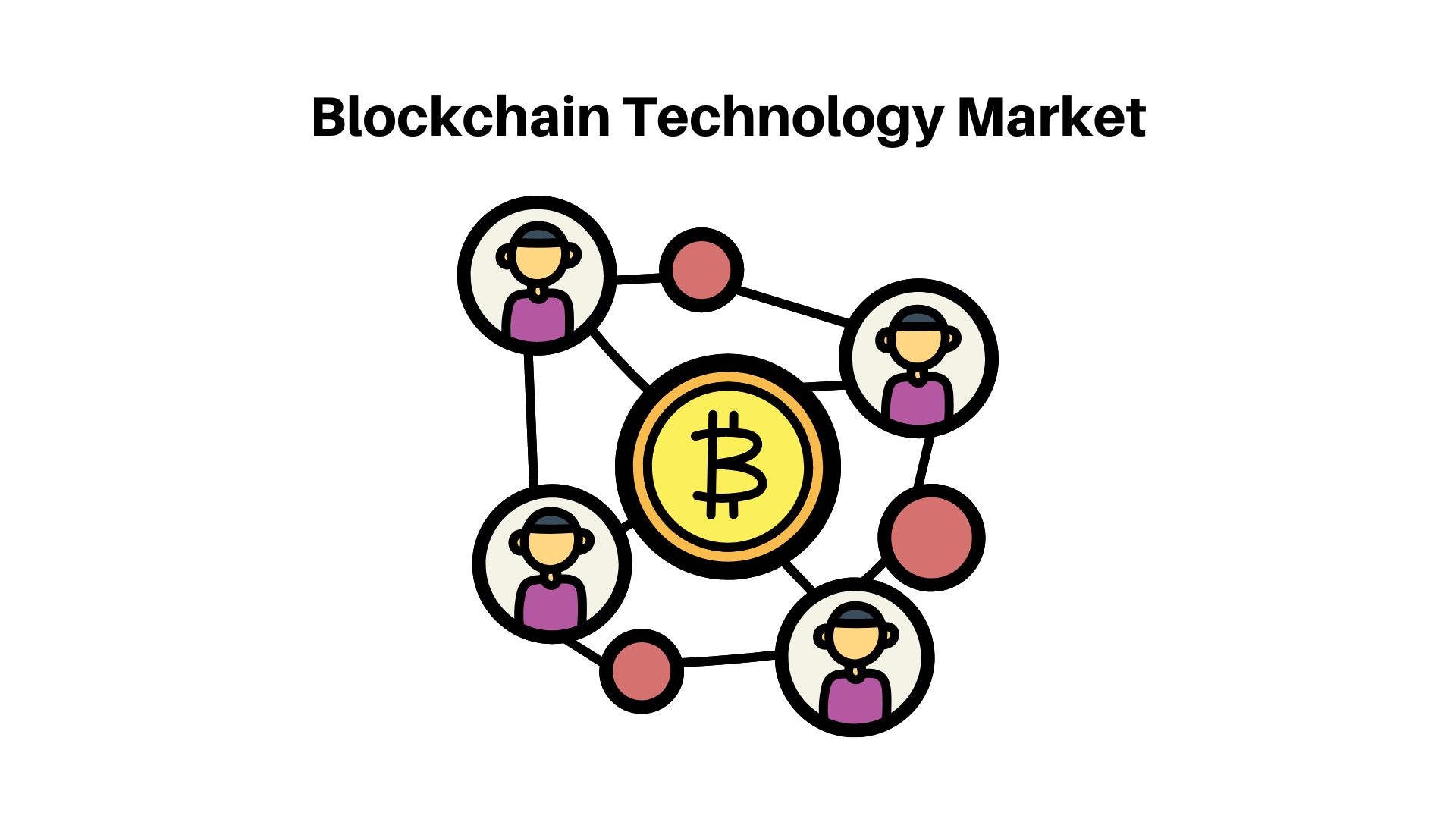Smart Homes Systems Market to Garner Bursting Revenues with CAGR rate of 14.9%, 2022-2032

Page Contents
Market Overview
The Smart Homes Systems Market size is expected to be worth around USD 292.8 Bn by 2032 from USD 75.6 Bn in 2022, growing at a CAGR of 14.9% during the forecast period from 2022 to 2032.
The Smart Homes Systems market is rapidly growing and evolving, fueled by advancements in technology and a desire for convenience and automation in our daily lives. This market encompasses a range of products and services designed to make our homes more intelligent, efficient, and secure. From voice-activated assistants that control lights and temperature to security systems that monitor activity both inside and outside the home, the possibilities are endless.
One major driving force behind the growth of the Smart Homes Systems market is the rise of connected devices such as smartphones, tablets, and smart speakers. These devices allow consumers to easily manage their home automation systems remotely or through voice commands. In addition, increasing concerns about energy consumption have led to a greater demand for smart thermostats and lighting systems that can be programmed to automatically adjust based on usage patterns.
Request For Sample Report Here: https://market.us/report/smart-homes-systems-market/request-sample/

Key Takeaways
- Growing Market: The Smart Homes Systems market is expanding rapidly due to the rising adoption of connected devices and demand for home automation solutions, global Smart Homes Systems market size will reach USD 292.8 billion with a compound annual growth rate (CAGR) of 14.9% from 2022-2032.
- Increased Connectivity: Thanks to the rising availability of high-speed internet and the Internet of Things (IoT), smart homes are becoming more connected and integrated than ever before. This connectivity enables homeowners to remotely control and monitor various devices in their residences.
- Energy Efficiency: Smart Homes Systems are increasingly being utilized to boost energy efficiency and cut costs. Smart thermostats, for instance, can learn homeowners' patterns and automatically adjust temperature settings accordingly to conserve energy.
- Home Security: Smart Homes Systems offer advanced security features that can protect homes from break-ins and other threats. Utilizing remote cameras and sensors, homeowners can monitor their properties remotely and receive real-time alerts in case of any breaches in security.
- Voice Control: As virtual assistants such as Amazon Alexa and Google Assistant become more prevalent, smart homes are becoming more user-friendly and accessible. Voice control enables homeowners to manage various devices in their homes using simple voice commands.
- Integration with Other Devices: Smart Homes Systems are becoming more and more integrated with other devices like smartphones, tablets, and wearable tech. This connectivity enables homeowners to take control of their homes from anywhere at any time.
- High Cost: One major obstacle to the adoption of Smart Homes Systems is their high price point. For many homeowners, the cost of smart devices and home automation systems may be too costly to justify for them to justify investing in them, thus discouraging many from taking advantage of these technologies.
Regional Analysis
North America has emerged as the leading market for smart home systems due to their widespread adoption, increased awareness among consumers about their benefits, and the presence of major technology companies in the region. The United States and Canada are two key countries driving growth in this space.
Europe is a major market for smart home systems, with countries such as Germany, the UK, France, and Italy driving growth in this area. Due to an increased demand for energy-efficient homes in these regions, more consumers are turning towards technology-based solutions which can reduce energy consumption.
The Asia Pacific region is expected to experience significant growth in the smart home systems market due to rising urbanization, rising disposable income, and an escalating trend toward home automation. China, Japan, and South Korea are the leading countries driving this growth within this region.
Latin America and the Middle East and Africa are emerging markets for smart home systems due to increasing urbanization, rising disposable income, and an increasing trend toward home automation. Brazil, Mexico, and South Africa are three key countries driving this growth in these regions.
Overall, the smart home systems market is projected to keep expanding globally due to rising demand for home automation, energy efficiency, and security solutions.
Browse the summary of the report and Complete Table of Contents (TOC): https://market.us/report/smart-homes-systems-market/table-of-content/
Market Dynamics
Drivers
Home automation systems are becoming more and more popular due to their convenience and user-friendliness. Smart home systems enable homeowners to control various devices and appliances in their houses remotely, making life simpler and more efficient. Energy-Efficient Homes, Smart home systems can help homeowners save energy by controlling heating, cooling, and lighting systems more efficiently. With growing concerns over climate change and rising energy prices, more people are turning to these technologies to reduce their carbon footprint and save money on utility bills.
Rising Awareness of Home Security, Smart home systems can enhance home security with features such as remote monitoring, motion detection, and door/window sensors. As concerns over security grow, more people are turning to these innovative technologies in order to protect their families and homes. Technological Advancements, Technological advancements have made smart home systems more affordable and accessible than ever before, thanks to smartphones and other connected devices that enable people to access and control their systems from anywhere at any time. Rising disposable income, With rising disposable incomes, more people can afford the upfront costs associated with installing smart home systems. This, coupled with potential cost-savings from energy bills, has driven demand for these systems among consumers.
Overall, these factors are expected to continue driving the growth of the smart home systems market over the upcoming years.
Restraints
High upfront costs One of the main barriers to the adoption of smart home systems is the high upfront costs associated with installation and setup. Many homeowners may not be willing or able to invest in smart home systems due to the high costs involved. Complex installation and setup, Installing and setting up smart home systems can be complex, especially for those who are not tech-savvy. This can deter some homeowners from adopting smart home technology. Fragmented ecosystem The smart home systems market is fragmented, with many different devices and platforms available. This can make it difficult for consumers to find compatible products and create a cohesive smart home ecosystem.
Security and privacy concerns As smart home systems become more interconnected and collect more data about homeowners, there are concerns about data privacy and security. Consumers may be hesitant to adopt smart home technology if they feel their privacy and security are at risk. Lack of standardization There is currently a lack of standardization in the smart home systems market, which can make it difficult for developers to create interoperable devices and platforms. This can also create confusion for consumers and hinder adoption.
Overall, these restraints may slow down the growth of the smart home systems market in the short term. However, as technology advances and becomes more accessible, these restraints may become less of an issue in the future.
Opportunities
Expansion into Emerging Markets As more households in emerging markets gain access to affordable internet and smart devices, the smart home systems market is expected to expand in these regions. This presents manufacturers and providers of such systems with an opportunity to expand into new regions and reach a broader customer base. Integration with Smart City Initiatives As cities become smarter and more connected, there is an opportunity for smart home systems to be integrated with these initiatives. For instance, these systems could monitor energy usage and reduce waste production, leading to a more sustainable and efficient city environment.
New Revenue Streams Smart home systems can open up new revenue opportunities for manufacturers and providers. Subscription-based services like home monitoring, energy management, and maintenance could generate a recurring source of income. Partnerships with Other Industries Smart home system manufacturers and providers have the opportunity to partner with other industries, such as insurance or energy firms, in order to offer bundled services and products. Doing so could create value for customers and fuel growth for the smart home systems market. Advanced AI and Machine Learning As AI and machine learning techniques continue to progress, there is an opportunity for smart home systems to become increasingly intelligent and personalized. This can enhance user experience while driving further growth in the market.
Overall, the smart home systems market offers numerous prospects for growth and development, particularly as technology continues to advance and become more widely accessible to consumers.
Challenges
Interoperability Issues One of the primary challenges faced by the smart home systems market is interoperability issues between different devices and platforms. Since many smart home products and systems are developed by different manufacturers, it may be difficult for them to work together seamlessly, leading to confusion and frustration for consumers and slowing adoption rates. Lack of Standardization Unfortunately, there is currently a lack of standardization in the smart home systems market, leading to compatibility issues and impeding the development of new products and services.
Data Privacy and Security Concerns As smart home systems collect more data about users, privacy, and security may become issues. Consumers may be reluctant to adopt this technology if they feel their privacy and safety are at risk. High Upfront Costs For many consumers, the expense of purchasing and installing smart home systems can be a deterrent to adoption. High upfront expenses may prevent some homeowners from investing in this modern convenience. Technical Complexity Smart home systems can be intimidatingly difficult for non-technical individuals to install and configure, creating a barrier to adoption that limits who can benefit from them.
Overall, these challenges present significant obstacles for the smart home systems market. Overcoming them is essential if we want to continue seeing continued growth and development within this space.
Report Scope
| Report Attribute | Details |
| The market size value in 2022 | USD 75.6 Bn |
| Revenue forecast by 2032 | USD 292.8 Bn |
| Growth Rate | CAGR Of 14.9% |
| Regions Covered | North America, Europe, Asia Pacific, Latin America, and Middle East & Africa, and the Rest of the World |
| Historical Years | 2017-2022 |
| Base Year | 2022 |
| Estimated Year | 2023 |
| Short-Term Projection Year | 2028 |
| Long-Term Projected Year | 2032 |
Key Market Segments:
Type
- Energy Management Systems
- Security & Access control
- Lighting Control
- Home appliances control
- Entertainment Control
Application
- Dwelling
- Business Building
- Hotel
Key Market Players included in the report:
- ADT
- Honeywell
- Vivint
- Nortek
- Crestron
- Lutron
- Leviton
- Comcast
- ABB
- Acuity Brands
- Alarm.com
- Control4
- Schneider Electric
- Time Warner Cable
- Siemens AG
- Sony
- Savant
- Nest
- AMX
- Legrand
Frequently Asked Questions
What is the market study period?
The Smart Homes Systems Market is studied from 2017 – 2032.
What is the growth rate for the Smart Homes Systems Market?
The Smart Homes Systems Market is growing at a CAGR of 14.9%
Who are the major players in the Smart Homes Systems Market?
ADT, Honeywell, Vivint, Nortek, Crestron, Lutron, Leviton, Comcast, ABB, Acuity Brands, Alarm.com, Control4, Schneider Electric, Time Warner Cable, Siemens AG, Sony, Savant, Nest, AMX, Legrand
The team behind market.us, marketresearch.biz, market.biz and more. Our purpose is to keep our customers ahead of the game with regard to the markets. They may fluctuate up or down, but we will help you to stay ahead of the curve in these market fluctuations. Our consistent growth and ability to deliver in-depth analyses and market insight has engaged genuine market players. They have faith in us to offer the data and information they require to make balanced and decisive marketing decisions.



